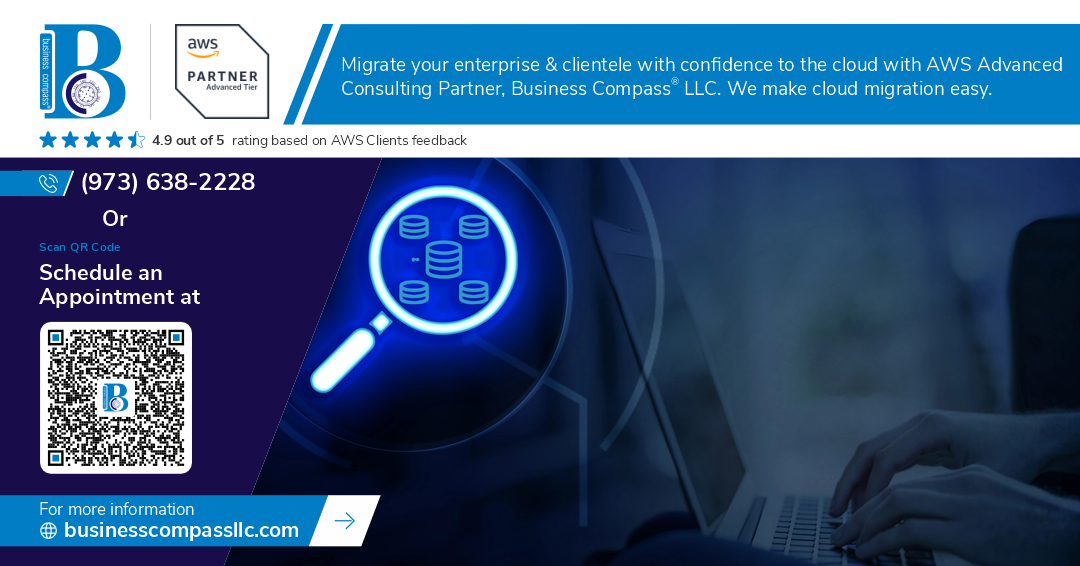Ever spent hours sifting through patient records only to miss critical connections hiding in plain sight? Healthcare organizations are drowning in data while starving for insights.
AWS HealthLake changes the game entirely. It transforms unstructured medical information into a searchable, analytics-ready data lake that actually makes sense of all those clinical notes, lab reports, and medical histories.
What’s truly remarkable about AWS HealthLake is how it bridges the gap between raw healthcare data and actionable intelligence without requiring a team of data scientists. The platform handles FHIR-formatted data with ease, making interoperability a reality rather than just another industry buzzword.
But here’s what most implementers miss when setting up their health data lakes…
Understanding AWS HealthLake: The Foundation for Health Data Management
A. What is AWS HealthLake and its core capabilities
AWS HealthLake is a HIPAA-eligible service that ingests, stores, transforms, and analyzes health data at scale. It automatically converts unstructured clinical text to structured FHIR format, enabling search, query, and analytics while maintaining security and compliance requirements that healthcare demands.
Setting Up Your First HealthLake Data Store
Prerequisites and account configuration
Setting up AWS HealthLake isn’t rocket science, but you’ll need an AWS account with the right permissions. Make sure you’ve got IAM roles configured for HealthLake access and your account is verified for healthcare workloads. Oh, and don’t forget to enable FHIR service in your preferred region – not all AWS regions support it yet!
Creating and configuring a HealthLake instance
Creating your first HealthLake data store takes just minutes through the AWS Management Console. Navigate to HealthLake, click “Create data store,” select FHIR R4 as your data model, and give it a meaningful name. Choose your encryption settings wisely – either AWS-managed or bring your own key. The preloaded FHIR resources will jumpstart your healthcare data journey.
Security considerations and compliance features
AWS HealthLake comes HIPAA-ready with encryption at rest and in transit baked in. You’re not cutting corners on patient privacy here! Leverage AWS’s IAM for granular access controls, and enable CloudTrail for comprehensive audit logging. The built-in de-identification features let you mask sensitive PHI when needed without losing clinical context.
Cost optimization strategies for different usage patterns
Don’t burn cash unnecessarily. HealthLake charges for storage and query operations, so right-size from day one. For development environments, go with smaller data stores. In production, consider reserving capacity for predictable workloads. Implement lifecycle policies to archive older data, and use query filters to minimize data scanned. Monitor usage patterns with CloudWatch to spot optimization opportunities.
Integration with existing AWS infrastructure
HealthLake plays nicely with your AWS ecosystem. Feed it data through S3 buckets or direct API calls. Process insights with Lambda functions triggered by HealthLake events. Visualize trends using QuickSight dashboards connected to your FHIR data. For machine learning, pipe normalized data to SageMaker. Even connect to on-premises systems through AWS Direct Connect for hybrid healthcare architectures.
Ingesting and Normalizing Health Data
Ingesting and Normalizing Health Data
A. Supported data formats and ingestion methods
AWS HealthLake doesn’t play favorites with your data. It gobbles up FHIR R4 bundles like they’re candy, whether they’re JSON files sitting in S3 buckets or streaming through direct API calls. The service handles both batch processing for those massive historical dumps and real-time ingestion when you need fresh data available ASAP.
B. Automating data import with AWS services
Hook HealthLake up to Lambda functions and you’ve got a data-importing powerhouse that never sleeps. Set up EventBridge rules to trigger imports whenever new files land in your S3 buckets. Or get fancy with Step Functions to orchestrate complex ETL workflows that prep your healthcare data before it even touches HealthLake.
C. Handling data quality issues and inconsistencies
Garbage in, garbage out? Not with HealthLake. The service doesn’t just store your data—it validates it against FHIR specifications, flagging inconsistencies faster than a hawk spots a field mouse. Its normalization engine standardizes those pesky variations in how different systems record the same information, turning your messy healthcare data into something actually usable.
D. Real-time processing capabilities
When seconds count, batch processing just won’t cut it. HealthLake’s real-time capabilities mean vital patient data becomes searchable almost instantly after submission. This isn’t your grandfather’s data lake—it’s processing streams of healthcare information with single-digit second latency, making it perfect for clinical decision support systems that can’t afford to wait.
Leveraging HealthLake’s Natural Language Processing
How NLP extracts valuable insights from clinical notes
AWS HealthLake’s NLP doesn’t just read text—it understands it. The system combs through messy clinical notes, pulling out diagnoses buried in paragraphs and medications mentioned in passing. Think of it as having a tireless medical assistant who never misses a detail, transforming unstructured doctor’s scribbles into actionable data points.
Identifying medical conditions, medications, and procedures
HealthLake spots patterns humans might miss. When a doctor writes “patient presents with elevated glucose consistent with T2DM,” the system flags “Type 2 Diabetes Mellitus” and links it to related lab values. It captures medications with dosages, procedures with dates, and even identifies social determinants affecting outcomes—all automatically.
Accuracy evaluation and improvement techniques
NLP models get smarter with feedback. Compare HealthLake’s interpretations against clinician reviews to identify gaps. Fine-tune entity recognition by adding specialty-specific terms. The system learns from corrections, continuously improving accuracy rates from the initial 85-90% to over 95% for most medical concepts.
Building Advanced Search Capabilities
Building Advanced Search Capabilities
A. Setting up semantic search across clinical documents
Searching mountains of clinical data shouldn’t feel like finding a needle in a haystack. AWS HealthLake’s semantic search capabilities let you query documents using natural language, not just keywords. Connect Amazon OpenSearch to your HealthLake instance, configure FHIR-specific analyzers, and watch as clinicians find exactly what they need—whether it’s “patients with uncontrolled diabetes” or “recent cardiac complications.”
Integrating Analytics and Machine Learning
Integrating Analytics and Machine Learning
A. Connecting HealthLake to AWS analytics services
AWS HealthLake isn’t just a storage solution—it’s your gateway to healthcare intelligence. Connect it seamlessly with Amazon QuickSight for instant visualizations or Amazon SageMaker to build predictive models that actually work. The real magic happens when your FHIR data flows directly into these services, eliminating those painful data preparation headaches.
Real-World Implementation Strategies
Real-World Implementation Strategies
A. Phased approach to HealthLake adoption
Don’t try to boil the ocean when implementing AWS HealthLake. Start small with a pilot project focused on a specific use case or dataset. Maybe it’s improving search for radiology reports or streamlining patient records. Once you’ve proven the concept and built confidence, gradually expand to other departments and data types. This incremental approach minimizes disruption while maximizing learning opportunities.
B. Addressing stakeholder concerns and requirements
Healthcare stakeholders come with valid concerns about any new data platform. Privacy officers worry about HIPAA compliance. Clinicians fear workflow disruptions. IT teams stress about integration headaches.
Meet these head-on by:
- Documenting AWS HealthLake’s built-in compliance controls
- Involving clinicians in UX design from day one
- Creating detailed integration maps with existing systems
- Establishing clear data governance policies
Remember – people support what they help create.
C. Training staff and building internal expertise
Your HealthLake implementation is only as good as the team running it. Invest in comprehensive training programs targeting different user groups:
| User Group | Training Focus |
|---|---|
| Clinicians | Search capabilities, data interpretation |
| Data Scientists | Advanced analytics, ML model development |
| IT Staff | System administration, troubleshooting |
| Leadership | Strategic capabilities, ROI metrics |
Consider AWS certification paths for your technical team and create internal communities of practice to share knowledge.
D. Measuring ROI and demonstrating value
Success with HealthLake isn’t just about technology implementation – it’s about business impact. Track metrics that matter:
- Time saved accessing complete patient information
- Reduction in duplicate tests/procedures
- Improved clinical decision-making speed
- Enhanced patient outcomes through better data insights
- Cost savings from operational efficiencies
Share these wins broadly. Nothing drives adoption like proven success stories from within your own organization.
Transforming healthcare data into actionable insights is now more accessible than ever with AWS HealthLake. By establishing a structured foundation for health data management, organizations can quickly ingest, normalize, and enrich their clinical information—all while maintaining HIPAA compliance. The natural language processing capabilities, combined with powerful search functionality, allow healthcare professionals to extract meaningful insights from previously untapped unstructured data sources.
As you embark on your own HealthLake implementation journey, remember that the true value lies in how you integrate these capabilities with analytics and machine learning workflows. Whether you’re a healthcare provider seeking to improve patient outcomes or a research institution aiming to accelerate discoveries, AWS HealthLake provides the technological infrastructure to make your health data not just accessible, but truly intelligent. Start small, focus on specific use cases, and gradually expand your health data lake to realize its full potential in transforming healthcare delivery and research.



















